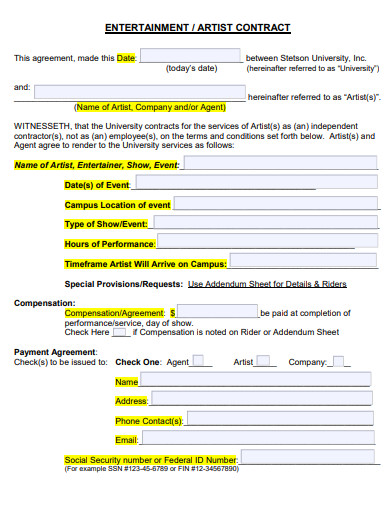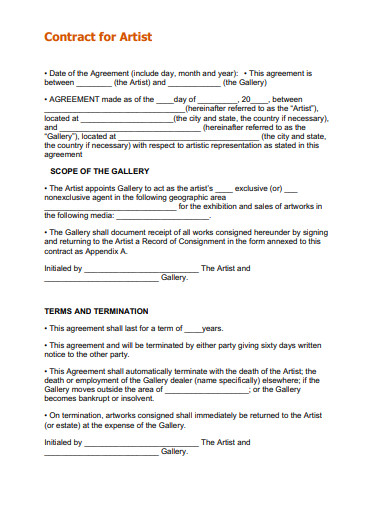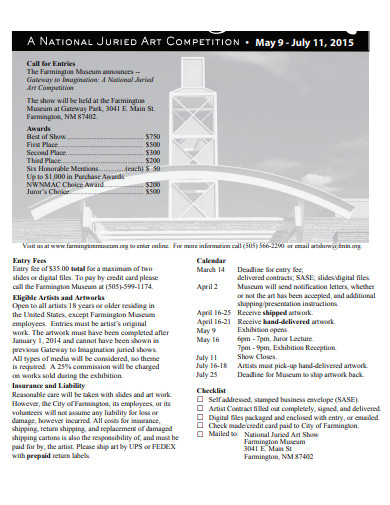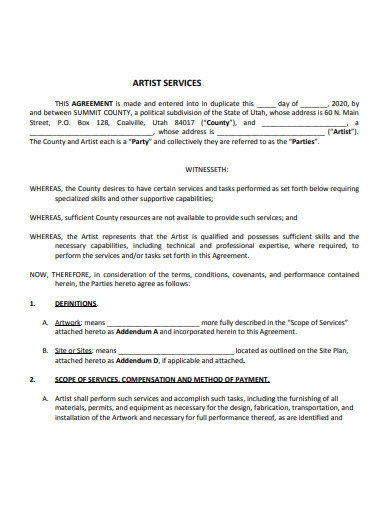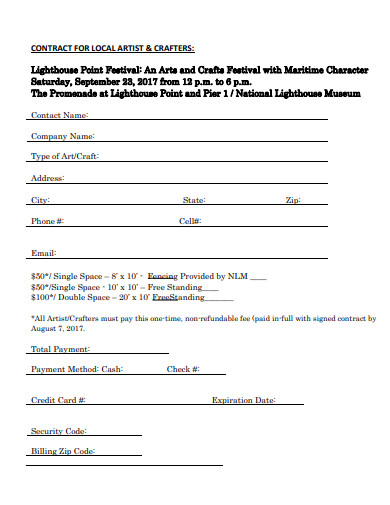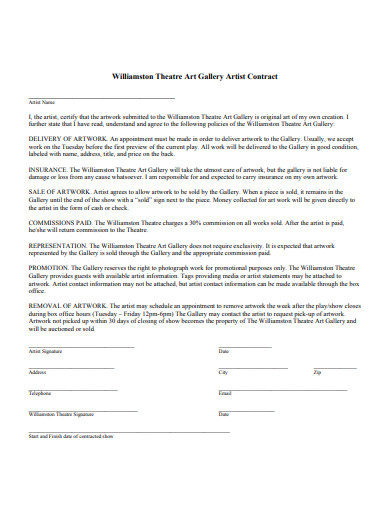10+ Artist Contract Examples to Download
Music artists aspire to get contracts from recording producers or record labels. Visual artists always have the desire to get gallery or art studio contracts. Whether you’re a freelancer or not, we all know that every artist’s dream is to be offered and to sign such a document. But what does it really contain? Well, if you must know, it consists of technical business matters, like your artwork payment, entertainment performance commission, management, termination, release, and many more. Obviously, it can be too overwhelming for someone who’s not very familiar with business jargon. If you’re here to learn more about artist contracts, then there’s no need to worry! Below, you’ll get a substantial and simple discussion about them with examples that have been prepared for your future reference!
10+ Artist Contract Examples
1. Artist Contract
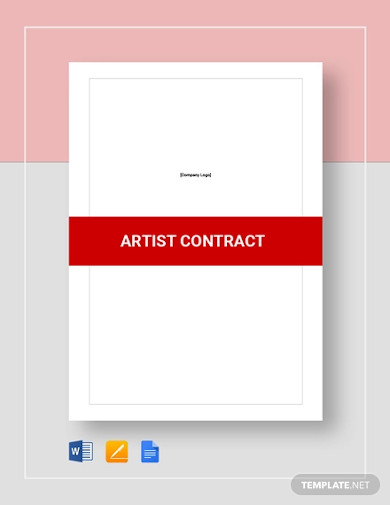
2. Artist Commission Contract
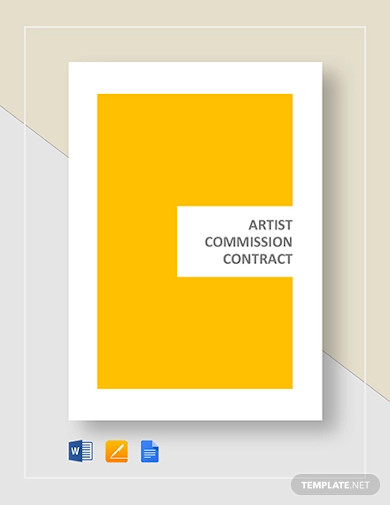
3. Artist Booking Agent Contract
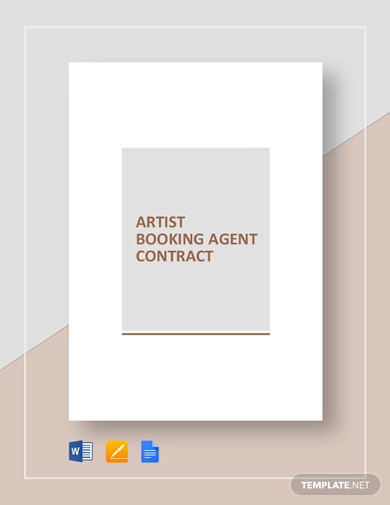
4. Artist Producer Contract
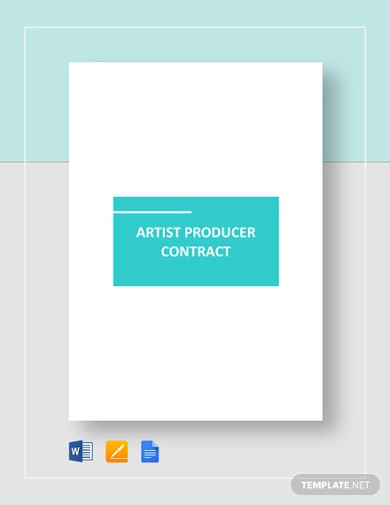
5. Artist Management Contract
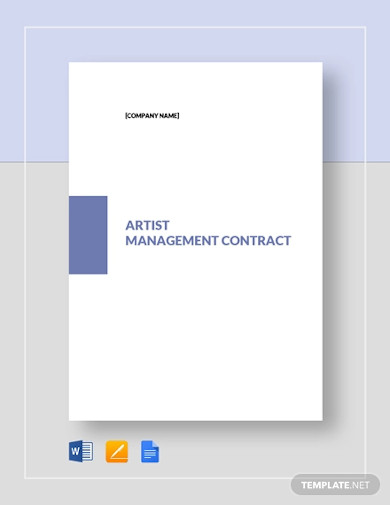
6. Music Artist Contract
7. Contract for Artist and Gallery Agreement
8. Entertainment Artist Contract
9. Artist Services Contract
10. Caricature Artist Contract
11. Art Gallery Artist Contract Example
What Is an Artist Contract?
An artist contract is a legal document that encompasses a certain artist’s business agreement with an employer. So, why do artists need one? In Ilise Benun’s article entitled Negotiating the Contract, she said that such a document helps protect both the artist and the employer from any complication on the performances or artworks, as well as on their corresponding payments. In the same article, it was shared that most creative professionals think that contracts are only for big jobs. Little did they know that it’s the smaller ones which need them the most. With that being said, we can all agree that an artist contract is important for every artist’s undertakings no matter what the scale is.
Suitable Agreements for Artists
There are three contracts that fit artists’ way of service. These include consignment agreements, licensing agreements, and commission agreements.
1. Consignment Agreement – In this arrangement, artists provide their artwork in a gallery to be sold to art collectors and art enthusiasts. Upon purchase, the gallery will gain a part of the payment, while the artists take what remains.
2. Licensing Agreement – For this deal, artists grant the interested company permission to broadcast their works as part of the company’s sales and marketing strategy or marketing and sales plan for a specific period. The artists will be paid either in full advanced payment or in royalties.
3. Commission Agreement – This agreement highlights a company’s demand for a specific artist’s service or artwork for an event or for another party. Unlike consignment agreement, it is the artists who take only a part of the full sales that are generated from the event or from the company’s client.
How To Create an Artist Contract
In writing contracts, you don’t only include the things that you see fit for you or your organization. The stipulations from the other party must also be taken into account to reach a mutual settlement, which is one way of making the contract into an enforceable document. Now, we understand that not all artists nor companies know how to create one. There’s no need for you to worry because we have set out our outline, so you don’t have to sort things out by yourself. Here’s how:
1. Define the Contract’s Purpose
Every business document needs an opening statement. For contracts, it would be its main purpose. As you write it, you have to also include the names of the parties involved. In a consignment agreement, the artists are referred to as consignor while the receiving company are named as the consignee. Whereas in a licensing agreement, the artists are known as the licensor while the other party is called a licensee.
2. Describe the Goods or Services
An artist contract could either be a sales contract or a service agreement contract. It is considered as a sales contract if an artist offers his or her artwork, like paintings and original songs, for selling. On the contrary, it can be considered as a service agreement contract if an artist offers his or her talent to create an artwork or as a form of a public performance. A good example of this is a contract for bar gigs. Whichever your artist contract is gonna be, you have to thoroughly describe the goods or services that are being offered or being acquired.
3. Set the Terms and Conditions
After defining the contract’s purpose and describing the contracting subject, you can set the terms and conditions. In this section, details on how long the service will be needed or on the selling period of artwork are discussed. The schedule of work and price sheet might also be needed.
4. Arrange Payment Specifics
One of the most important areas in an artist contract is the payment. Obviously, it presents the specifics about the artist’s remuneration. It should consist of a payment schedule, payment method, as well as the basic billing information.
5. Add Termination Clause
Ever since the contract first existed, breaches have too. As more of them occurred in the past, the standards in our governing laws evolved for the protection of any contract. And as the maker of contract, you should take into account the different dispute resolution policies and the termination policies and procedures.
6. Finalize the Deal
Once everything has been carefully established and agreed upon, you can then seal the deal. People involved in verbal agreements can shake their hands and call it a day. However, that won’t be enough for written contracts. These written contracts, like your artist contract, should be settled with signatures.
FAQs:
What are record labels?
Record labels refer to companies that market music and music videos. They also include talent scouting, talent development, music production, and copyright enforcement.
How do artists make prices for their artworks?
The prices of artworks depend on how artists think they’re worth. Some artists formulate their art prices by calculating their time spent on their production on top of the costs of their used materials.
How much do A&R representatives make?
Artists and Repertoire (A&R) representatives, according to Paysa, have the average annual earnings of USD 39,871.
Artists patiently wait for their works to be acknowledged. By the time they’re recognized, there should be no complications. If there will be any, they should at least be prepared with a document that could protect them from legal disputes. A contract, by its very nature, perfectly suits such a need.



